May, 1946
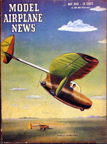
Bowlus-Nelson "Butterfly" ("Dragonfly")
Model Airplane News Cover Art for May, 1946
by Jo Kotula
Click to Enlarge
In 1945, William H. Bowlus and Ted Nelson formed the Nelson Aircraft Corporation to build a two-seat, motor glider version of the popular Bowlus BA-100 "Baby Albatross". The designers nicknamed this design the Bumblebee it was sold as the Dragonfly.
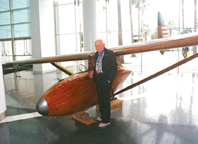
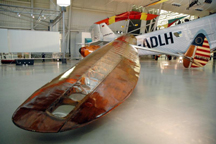
The Bowlus Baby Albatross
Click to Enlarge
The basic Baby Albatross design was kept but the cockpit was widened to accommodate side-by-side seating and flight controls for each occupant. Other improvements included tricycle landing gear and a steerable nose landing gear, additional vertical fins mounted on the ends of the horizontal stabilizer, and a hinged canopy. A handle to pull-start the engine was also available inside the cockpit. The aft section of the fuselage pod on the Baby Albatross was an ideal place to install a pusher engine and propeller.The motor generated barely enough power for takeoff and a slow climb.

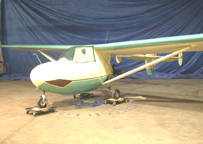
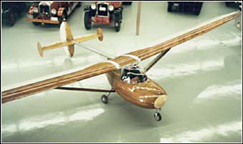
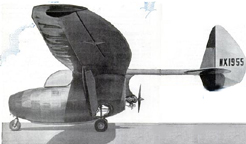

Photos of the Bowlus-Nelson "Butterfly" ("Dragonfly"))
Click to Enlarge
The Butterfly/Dragonfly was featured in Popular Mechanics and given a fairly glowing (if innacurate) report. From Popular Science, August 1946
"...Development of a two-place soaring plane with a small auxiliary engine for take-offs is exciting glider fans. Designed by William Hawley Bowlus, the Bumblebee is built of plywood with a hollow duralumin tail boom. A small propellorat the rear is driven by a horsepower, four cylinder two-cycle engine. The glider takes off under its own power at 38 miles per hour and climbs 300 feet a minute. Once aloft, the engine is switched off and it performs like a glider ..."
Click here to download a copy of this article.
In reality, this combination of power plant and propeller allowed the Dragonfly to climb 235 feet per minute at sea level. The extra weight of the engine, plus the drag from the widened fuselage, gave the Dragonfly a mediocre lift-to-drag ratio. The self-launch capability cost too much performance to appeal to most prospective motorglider owners and Bowlus and Nelson only sold seven Dragonflys. Nelson attempted to design another self-launching glider in 1949 but this time, he teamed with Harry Perl. Don Mitchell also helped on the new airplane. Nelson and Perl called this new design the Hummingbird (Nelson mounted a more powerful engine on a retractable pylon behind a two-seat, tandem cockpit. This arrangement improved the soaring performance but the aircraft cost much more than a conventional, two-seat glider and Nelson and Perl built only six Hummingbirds
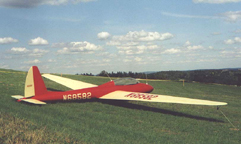
The Nelson Hummingbird
Click to Enlarge
Click Here for more information about William Hawley Bowlus, especially his connection with Charles Lindbergh.

Click to go back and select another cover.
Counter for the Entire Site (not just this page..)
Home | About Lindy | Last Week's Reviews | Upcoming Events | 1940s Collecibles
The Guide - Establishments - Travel - Accessories
Music | Links | Photo Gallery | Extras | Contact